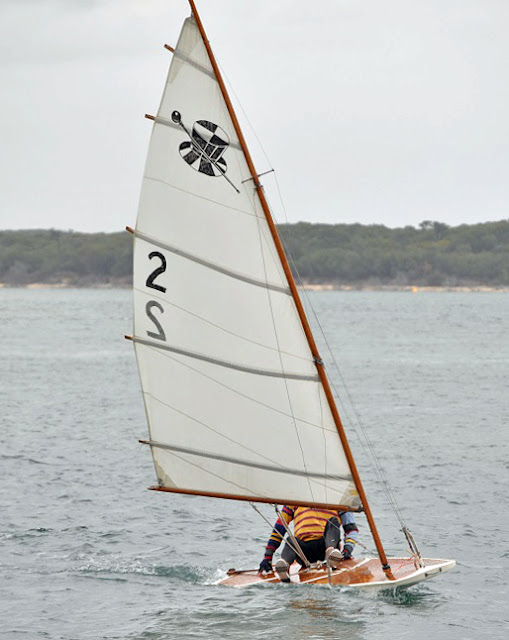I saw this wood engraving on my good friend, Tom Price's, work desk and he was kind enough to scan it in. In poring over the wood engraving, the best we can make out, putting our heads together, is this is Annapolis Harbor just after the Civil War. Sketched from the vantage point of the North Severn River, we see several Navy tall ships anchored off the Naval Academy, a steam ship motoring west on the Severn River towards the Bay, and off to the right, presumably anchored, a Monitor iron-clad war-ship. (Plus, a small cat-boat sailing amongst all this big lumber.)
James W. Cheevers, Senior Curator at the U.S. Naval Academy Museum, sent along this detailed email on the history represented by this engraving, from which I quote below.
"This line engraving is definitely post Civil War. It is a view of Annapolis from across the Severn River with the Naval Academy main pier left of center surrounded by ships, a good view of the seaward side of Stirbling Row, the Maryland State House sticking up at center, McDowell Hall at St. John's College, a clear view of the Academy's Steam Engineering Building (1866) and New Quarters or Cadet Quarters (1868) with a copula out of perspective by sticking up too high in proportion to the building.
"I think the three-turreted monitor is a mistake, too. I have record of seven different monitors visiting and/or serving the Naval Academy between 1866 and 1910, but none of them had three turrets. Those with double-turrets included USS Amphitrite, formerly Tonawanda; USS Nevada (BM 8), and USS Terror. I think the monitor is probably meant to be USS Amphitrite which had a funnel between its two turrets that when retracted could have been mistaken from a distance as a turret. It was used at the Academy for training between 1866 and 1872.
"I note that there is an inscription lower left. It looks like the words Fleet and Puck. Puck was a magazine from 1871 to 1918, but its illustrations were primarily cartoons. There appears to be another inscription on the right where the dark water meets the land. It seems to end in "weed" so it could be an artist's name. If are able to better decipher either of these inscriptions examining the original up close, let me know what they are because we do have reference books on artists to perhaps help you further.
(Click on image for larger view.)
Erratum: Peter Belenky, who it turns out has done marine etchings, points out that I originally erroneously categorized this print as an etching when it is actually a wood engraving. I've pulled his detailed comment over to the main post and made the appropriate corrections to the main post. Thanks Peter for the education.
"Not an etching, but apparently a wood engraving. In both processes, ink is rubbed into grooves on the plate and wiped off the surface. Then paper pressed down picks up the ink. In an etching, the principal means of creating grooves is scratching the design through a varnish coat on a metal plate and bathing the plate in acid. In an engraving (metal or wood), the grooves are gouged with tools. These are "intaglio" processes, meaning that the lines are printed where the surface is cut away. In the alternative "relief" process, like book printing, the blank spaces are below the surface and ink is rolled onto the raised surface to be printed.
"The wood engraving process was the chief means of publishing images in magazines of the Civil War period, and many of Winslow Homer's drawings and paintings from the front were reproduced and circulated in this way.
More from James Cheevers: In response to a further inquiry of mine about the dock with the paddlewheeler at the top right of the engraving, Mr Cheevers sent along some further fascinating details.
"Yes, there was a wharf at the end of Maryland Avenue on the Severn River. It was not a public wharf after 1847 because the Federal government had purchased the property as part of the first expansion of the new Naval School at Annapolis. In the post Civil War period the wharf was called Phlox Wharf after the screw steamer USS Phlox, built in Boston in 1864 as F. W. Lincoln and purchased by the U.S. Navy. Phlox had seen active service during the battles of Fort Fisher and then was reassigned to the U.S. Naval Academy when it returned from Newport, RI, to Annapolis. Phlox served as the academy's ferry or water taxi from 1865 to 1873.
"There had earlier been an additional pier at the end of Tabernacle Street, later College Avenue, but I think by the Civil War period it was gone.

















